|
Material
|
Contact Type
|
Advantages
|
Disadvantages
|
|
|
Latex (Natural Rubber)
|
Incidental Contact
|
- Good for biological and water-based materials
- Comfortable with high tactile sensitivity
- Elastic and fits well
- Biodegradable
|
- Poor for organic solvents
- Little chemical protection
- Hard to detect puncture holes
- Can cause or trigger latex allergies
|
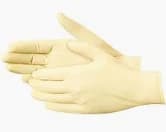
|
|
Nitrile
|
Incidental and Extended Contact
|
- Excellent general use glove
- Good for solvents, oils, greases, and some acids and bases
- Clear indication of tears and breaks
- Good alternative for those with latex allergies
- More durable and puncture-resistant than latex
|
- Less elastic than latex
- More expensive
|
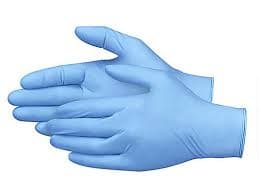
|
|
Butyl Rubber
|
Extended Contact
|
- Good for ketones and esters
|
- Poor for gasoline and aliphatic, aromatic, and halogenated hydrocarbons
|
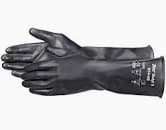
|
|
Neoprene
|
Extended Contact
|
- Good for acids, bases, alcohols, fuels, peroxides, hydrocarbons, and phenols
- Good for most hazardous chemicals
|
- Poor for halogenated and aromatic hydrocarbons
|
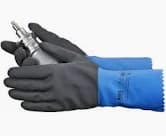
|
|
Norfoil
|
Extended Contact
|
- Good for most hazardous chemicals
|
- Poor fit; dexterity can be improved with a heavier nitrile glove over it
|
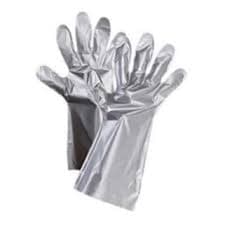
|
|
Viton
|
Extended Contact
|
- Good for chlorinated and aromatic solvents
- Good resistance to cuts and abrasions
|
- Poor for ketones
- Expensive
|
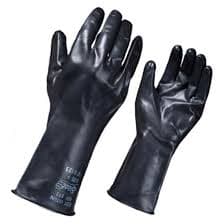
|
|
Polyvinyl Chloride (PVC)
|
Specific Use
|
- Good for acids, bases, oils, fats, peroxides, and amines
- Good resistance to abrasions
|
- Poor for most organic solvents
|

|
|
Polyvinyl Alcohol (PVA)
|
Specific Use
|
- Good for aromatic and chlorinated solvents
|
- Poor for water-based solutions
|
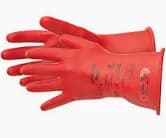
|
|
Stainless Steel, Kevlar, Leather
|
Specific Use
|
- Cut-resistant gloves
- Sleeves available for protection to wrists and forearms
|
- Wear appropriate disposable gloves on top if potential for biological or chemical contamination
|
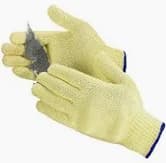
|
|
Cryogenic Resistant Material (Leather)
|
Specific Use
|
- For use with cryogenic materials
- Designed to prevent frostbite
|
- Never dip gloves directly into liquid nitrogen
|

|